Translucent Design (CFW 58) from Pergamenata Paper
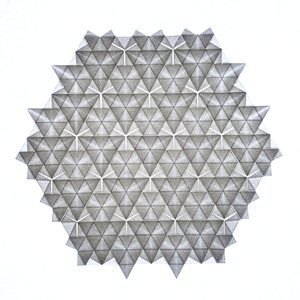
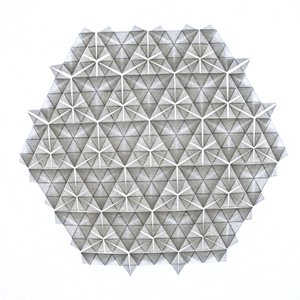
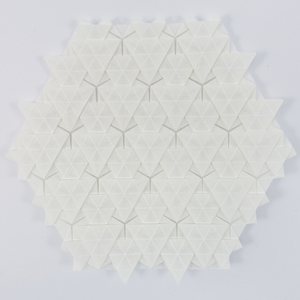
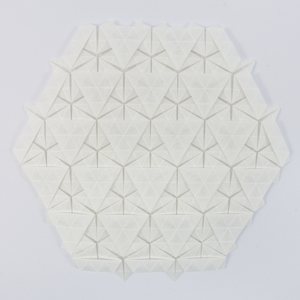
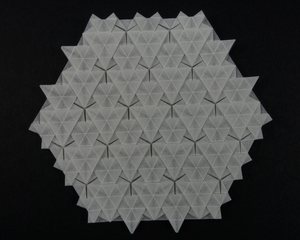
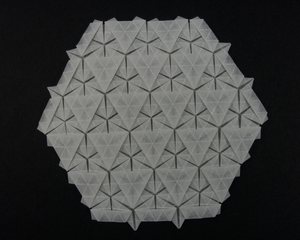
The first time I folded this tessellation, I used non-transparent paper, which made it look great in reflected light, but allowed little in terms of viewing it as a “translucent design”. Now, I refolded it in Fedrigoni Pergamenata Bianco 110 gsm, which I think I can call a type of tracing paper, but one that does not break after precreasing. The back-lit view is stunning indeed.
This time, I did not precrease anything other than the hex grid (32×32×32). The molecules are built from modified triangle twists, and base triangle twists I could fold directly without precreasing, which made the process much faster.
Comments